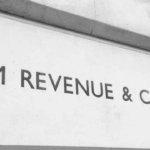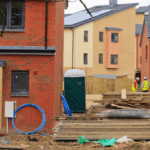UK house prices saw their sharpest monthly fall in a year as the housing market cooled following a rush of buyers attempting to beat changes to stamp duty thresholds in England and Northern Ireland.
According to the latest data from Halifax, the average price of a home fell by 0.5% in March, bringing the typical house price to £296,699. This marks the largest monthly drop since March 2023 and follows a second consecutive decline. February’s figure, originally reported as a 0.1% dip, was revised down to a 0.2% fall.
The downturn in prices follows a surge in activity earlier this year, as buyers scrambled to complete purchases before changes to stamp duty came into effect on April 1. In January, property prices surged to a record high, driven by the rush to finalize transactions before the new tax rules were implemented.
“House prices rose in January as buyers rushed to beat the March stamp duty deadline,” explained Amanda Bryden, head of mortgages at Halifax. “However, with those deals now completing, demand is returning to normal, and new applications are slowing.”
The stamp duty changes, introduced by Chancellor Rachel Reeves in her October budget, marked the end of the temporary reductions that had been in place during the pandemic. First-time buyers now pay stamp duty on homes worth more than £300,000, down from £425,000, while the upper threshold for a reduced rate has dropped from £625,000 to £500,000. The standard zero-rate threshold for all buyers has also been halved, from £250,000 to £125,000.
Halifax also reported a significant spike in property completions in March, with house sales volumes exceeding those of both January and February combined. “It included the busiest single day on record,” Bryden noted. “Following this burst of activity, house prices, which remain near record highs, unsurprisingly fell back last month.”
Despite the recent slowdown, analysts remain cautiously optimistic about the outlook for the housing market in 2025. The ongoing imbalance between supply and demand is expected to support house prices, and falling mortgage rates could provide additional stability. The Bank of England is widely anticipated to reduce the base interest rate by up to three times this year, each by 0.25 percentage points, which would provide further relief for buyers and help maintain affordability.
“Hopefully this month-on-month dip is only temporary,” said Nathan Emerson, chief executive of Propertymark. “The spring and summer months normally spur on a flurry of housing activity, especially when there are competitive mortgage deals available due to last year’s rate reductions.”
Mortgage rates have begun to edge down again, with Moneyfacts reporting that the average two-year fixed rate is now 5.32%, and the five-year fixed rate is at 5.17%. Additionally, the number of residential mortgage products continues to rise, reaching 6,945, up slightly from 6,936 at the end of the previous week.
While the recent data suggests a softening of market momentum, annual house price growth stood at 2.8% in March, unchanged from February but down from 3.4% in December and 4.7% in November. As the market rebalances after a volatile start to the year, attention will turn to how buyers and sellers respond to changing economic conditions in the coming months.









